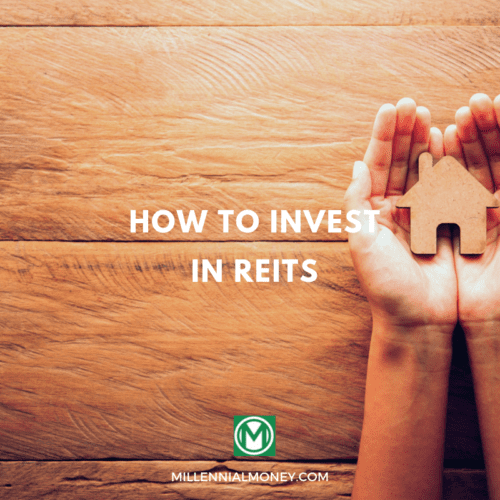If you’re like most investors, your investment portfolio consists of several different types of holdings. You probably have a mix of individual stocks, mutual funds, index funds, exchange-traded funds (ETFs), and bonds.
If that sounds like your situation, you’re well on the way to building a portfolio of investments to be proud of. Still, when it comes to creating a truly diversified portfolio, there’s one more category you may be neglecting called alternative investments. By some estimates, retail investors should aim to make alternative asset classes make up roughly 5% to 10% of their portfolios.
What are Alternative Asset Classes?
Alternative asset classes describe assets that exist outside of the scope of traditional investments, income, or cash classes.
For example, venture capital professionals, fund managers, institutional investors, accredited investors, and other high-net-worth individuals might own shares in startups or other private investment funds.
Alternative investments can sometimes carry a higher risk than public markets. But they offer investors the potential to produce better returns. You just have to do your due diligence — and that means a lot more than would be required if you’re just investing a couple hundred dollars in Apple stock — to make sure you make the right decisions.
- Real estate
- Private debt
- Private equity
- Cryptocurrency
- Infrastructure
- Commodities
- Collectibles
- Intellectual Property
- Structured Products
1. Real estate
Real estate investing involves the purchase of residential or commercial properties. For example, you can buy a single or multi-family home, a business facility, or land in the form of a lot, farmland, or timberland.
Real estate offers a lot of upside for investors. For example, it’s a relatively safe way to achieve portfolio diversification and spread risk around. It also offers protection against inflation and an opportunity for competitive total return.
Investing in a lucrative rental property could also lead to a strong cash flow and residual income — meaning you could earn monthly income without doing much work.
At the same time, real estate investing has some drawbacks that you need to be aware of. For example, it can be very expensive, especially if you have to pick up a second mortgage. There is also the cost of maintenance and upkeep to consider, and you may have to hire a property management company.
As an alternative option, a growing number of investors are putting their money into real estate investment trusts (REITs), which own and operate income-producing properties. REITs allow you to profit from real estate without going through the hassle of purchasing and managing physical property. As an added bonus, you don’t have to deal with tenants either.
I’ve been investing with Fundrise since 2017. Disclosure: when you sign up with my link, I earn a commission. All opinions are my own.
2. Private debt
Private companies often need funds to expand their operations, hire, or fund research and development projects. However, they don’t always have access to the same funding resources that are available to publicly traded corporations, which typically raise money through stocks and bonds.
Instead, privately held companies sometimes raise money by selling equity — or ownership shares. They also occasionally sell debt and bonds to private investors.
One of the most common ways to invest in private debt funding is through peer-to-peer lending. In a peer-to-peer lending arrangement, there is no need to deal with a bank or any type of middleman. Investors can connect directly with people or businesses that need loans and issue funding.
Private debt can be riskier for lenders. However, it can sometimes carry a higher interest rate and generate a stronger rate of return than most traditional financial instruments.
3. Private equity
Private equity investing involves issuing capital to private companies or investors. Most private equity investing is centered around high-risk, early-stage organizations. This type of investing is often seen in the technology industry.
Private equity investors typically have deeper pockets, with minimum investments usually hovering in the $250,000 range or higher.
The more common approach for investors is to get involved in private equity through funds like exchange-traded funds and funds of funds. These types of investments are typically much more affordable and have a lower barrier to entry.
4. Cryptocurrency
Another type of alternative investment that’s receiving a great deal of attention these days is cryptocurrency.
At a very basic level, crypto is a type of digital currency that facilitates transactions over a distributed or decentralized public ledger using a mechanism called cryptography.
The most well-known cryptocurrency on the market right now is Bitcoin ($BTC), which had a legendary bull run that saw its value spike from roughly $4,000 in the spring of 2020 to upwards of $41,000 by early 2021.
Ultimately, Bitcoin is just one form of cryptocurrency and there is a whole market of altcoins — also known as alts or alternative coins — to explore.
For example, Ethereum ($ETH) is another well-known coin. In early 2021, the price of an Ethereum coin eclipsed $1,200.
Of course, if you invest in crypto when the price is low and the coin skyrockets in value, you could make massive gains, just like every other kind of investment. But not so fast: Cryptocurrencies come with heavy volatility. Just as your fortune might skyrocket overnight, it’s just as easy to lose large sums of money in a very short period of time in this market.
If you’re thinking about getting into crypto, you can buy cryptocurrencies through an exchange like Coinbase or select brokerages like Schwab or Robinhood. Just remember that all gains are taxed by the IRS.
5. Infrastructure
Infrastructure can come in many different forms — like roads, bridges, pipelines, cellphone towers, and even airports.
In the past, infrastructure was mostly state-funded or managed by large firms on a contract basis. However, in recent years, the public has gotten more involved with infrastructure investing. Investors can now buy into infrastructure through hedge funds and private equity.
If you have an opportunity to invest in infrastructure, it could potentially lead to long-term stable gains with relatively low risk. Just keep in mind that you won’t get rich overnight through an infrastructure project. This is, however, something that investors can use to stabilize a portfolio.
6. Commodities
Commodities are one of the most established forms of investing. This strategy involves buying real assets and resources like food products (e.g., sugar, corn, and coffee), natural gas, precious metals, and oil.
Commodities are not considered public equities. As a result, they are considered to be an excellent hedge against inflation. Their value depends largely on supply and demand.
For this reason, commodities are considered extremely volatile. Raw materials can double or even triple in value over a short time when they are in high demand.
If you decide to invest in commodities, it’s a good idea to understand the market that you’re dealing with so that you can have more visibility into key influencing factors that can determine overall prices. For example, if you invest in oranges or wheat, it helps to have a thorough understanding of agriculture and supply chains. But before you jump in, keep in mind that the people who trade commodities for a living probably have a lot more experience and information than you do.
7. Collectibles
Collectibles refer to the purchasing and selling of tangible assets. Some examples of collectibles include fine art and classic cars. Additional examples may include fine wine, sports memorabilia, or records.
This is another area where it pays to have a deep understanding of what you’re investing in. For example, if you invest in classic cars, you should have at least a working knowledge — and a strong interest — in automobiles.
Investing in objects just for the sake of diversifying your portfolio is generally not recommended unless you have the financial means to do so. Collectibles are generally seen as more of a hobby than a financial instrument. However, they can increase your net worth.
If you’re just getting started investing, keep your eye open for collectibles and know how they work. Be open to all types of investments, but be cautious with this category. If you’re going to invest in something, make sure you have a strong “why” before you make a purchase.
8. Intellectual property
In addition to tangible assets, you can also invest in intangible assets — like songs and names (e.g., Michael Jackson buying the Beatles’ catalog). Intellectual property can also be applied to ideas that may lead to future value for the investor.
When you invest in intellectual property, you invest in legally owned assets that are protected from public use without expressed consent.
One of the biggest upsides to investing in intellectual property is there is no limit on its value.
9. Structured products
Structured products — or market-linked investments — are pre-packaged financial investments. They are usually built around derivatives and fixed-income markets. Two common types of structured products include collateralized debt obligations and credit default swaps.
Structured products are risky — and, as such, something that new investors should be cautious about plunging into. If you’re interested in structured products, talk to a financial advisor first to make sure they are a good fit for your portfolio.
Frequently Asked Questions
Are alternative assets risky?
Most investments carry risk and alternative investments are no exception. However, there are varying levels of risk and reward.
For example, investing in commodities is generally much riskier than investing in real estate. Ultimately, where you put your money depends largely on your risk tolerance and your long-term financial goals.
Before you make any investments, spend some time analyzing your portfolio and see how much risk you are in a position to take on. And whether it’s buying Bitcoin or building a collection of Beanie Babies, don’t invest money you can’t afford to lose.
Can you invest in alternative assets in an IRA?
IRA custodians tend to be conservative about the types of assets that they allow. Further, some types of assets are also prohibited from being in IRAs by the IRS, like collectibles and antiques.
However, in recent years, custodians have started to become more open to the types of investments you can add to an IRA. Many are now choosing to allow items like futures contracts and private equity.
Check with your IRA custodian to see what you are allowed to include in your specific plan. Consider diversifying and exploring some of the above-mentioned options if they are allowed. This can increase diversity and potentially lead to stronger long-term gains.
What is illiquidity?
Illiquidity refers to a type of asset that is not easily converted into cash without a substantial loss of value. For example, real estate is typically an illiquid form of investment because it’s usually not easy to sell a house quickly. On the other hand, if you have a lot of cash and stocks, you have a lot of liquidity.
Illiquidity isn’t a major concern for long-term investors. But if you’re making short-term investments, it’s definitely something to consider.
What is a hedge fund?
A hedge fund is a type of investment company that invests primarily in alternative investments. When you work with a hedge fund, your aim is to beat the market.
The main issue with hedge funds is that investors typically invest in high-risk portfolios, which can lead to negative returns. In addition, hedge funds operate as private entities. As a result, they tend to have less public disclosure and limited visibility. Of course, you also need to have a ton of money to get started.
In short, a hedge fund can make you rich if an investment pans out in your favor. However, it can also go in the opposite direction and lead to serious loss. Even if you have enough money to get involved, proceed with caution with hedge funds.
The Bottom Line
As an investor, you should leave no stone unturned in your quest to build the ultimate long-term investment strategy. Allocation is all about knowing the various investment options that exist and deciding how to proceed.
You don’t have to invest in every last asset class, but you should at least know about them and research opportunities to see if any are right for you.
Talk with a financial services provider with a proven track record of success, and ask about forming a strategy that incorporates both traditional asset classes and alternative assets. The more diversified your portfolio is, the easier it will be to protect your investments.
Read More:







No comments yet. Add your own